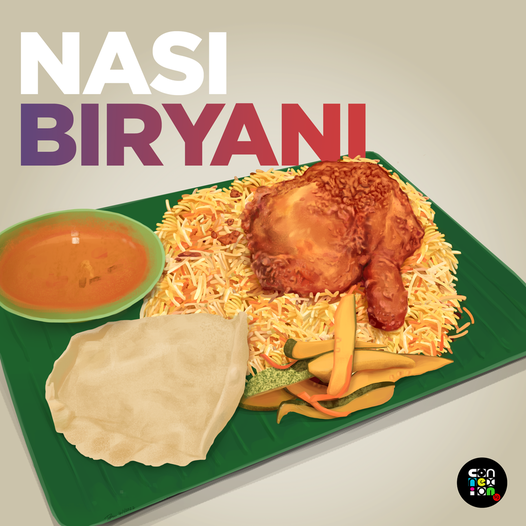Biryani in Singapore
Biryani: A dish of slow-cooked long-grain basmati rice infused with spices, served with hefty chunks of chicken or mutton and a generous dollop of curry for good measure. Here, we often have it with achar — a pickled salad of cucumber, pineapple and tomatoes — on the side, and a crisp, fresh papadam for extra crunch.

The origins of biryani are disputed. Some believe that it originated in Hyderabad in southern India, while others point to its Persian origins, as “biryani” can be traced to “birinj biriyan”, meaning fried rice in Persian. It could have come too of the mix of Hindustani and Persian cuisine during the Mughal Empire (16th-19th century). In any case, there’s not just one type of biryani, as it takes on regional influences where it ends up. In Northern India, Lucknowi biryani is infused with spices like star anise, cinnamon and saffron, and is typically ‘dum’ style – with rice and meat layered and slow-cooked in an earthen pot over a fire. There’s Thalassery biryani from Kerala in Malabar, which is made with short grain rice instead and uses local spices, cashews and fried onions. And there’s also Hyderabadi biryani, where meat and rice infused with saffron, onions, and dried fruits are slow-cooked dum style.
In Singapore, our homegrown version likely developed from immigrants from southern India, who brought their cuisine with them, and adapted it with local flavours and ingredients. While it has its roots as a celebratory dish, and the special dum biryani is still often featured at celebrations, religious festivals, and other events in the Muslim community, it has also transformed to be an everyday food in our hawker centres.
There are many ways to do biryani, and ours — slow-cooked to perfection and steeped in regional and local influence — adds to the richness of food on our tables. #FoodForThought

